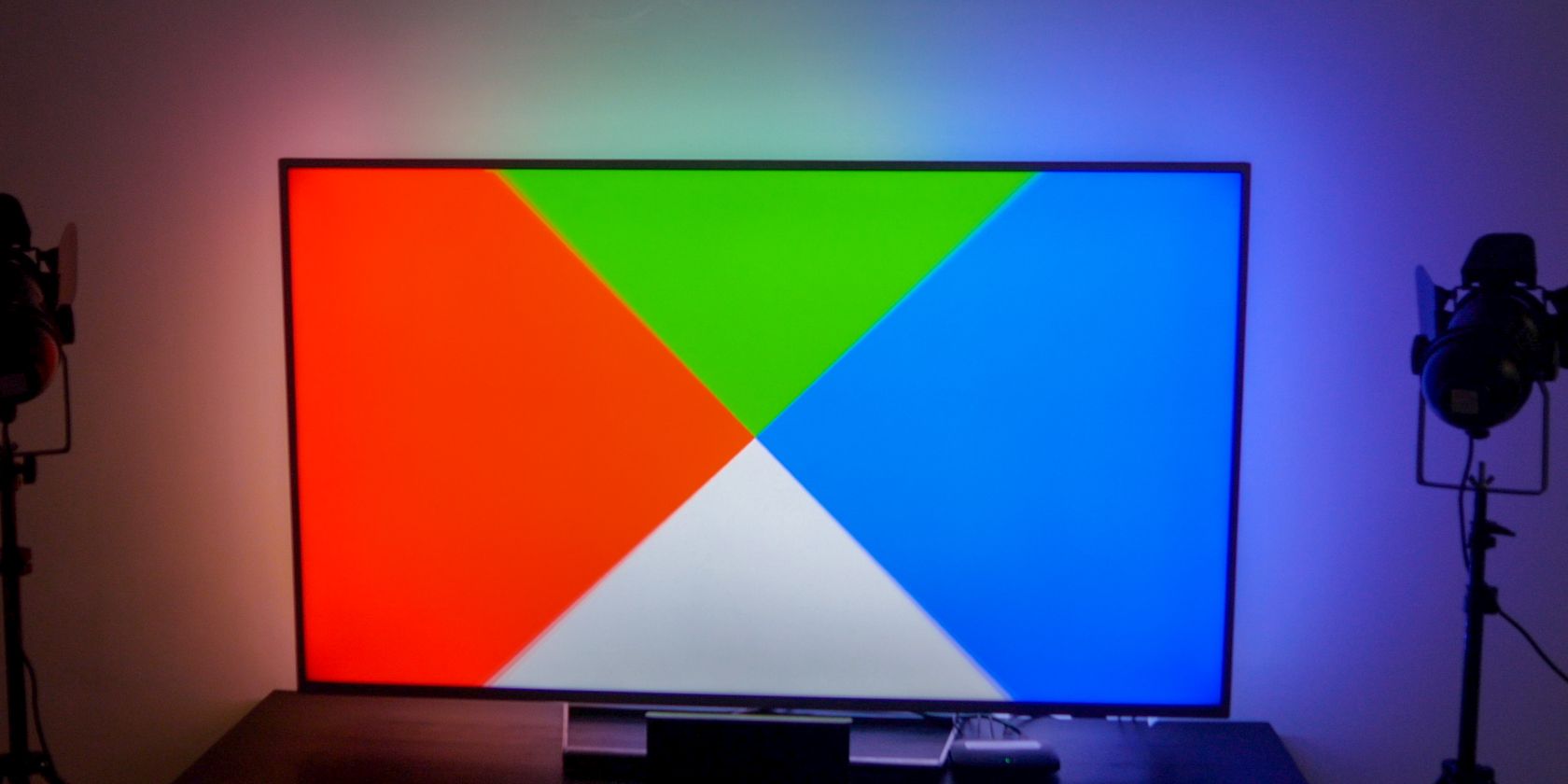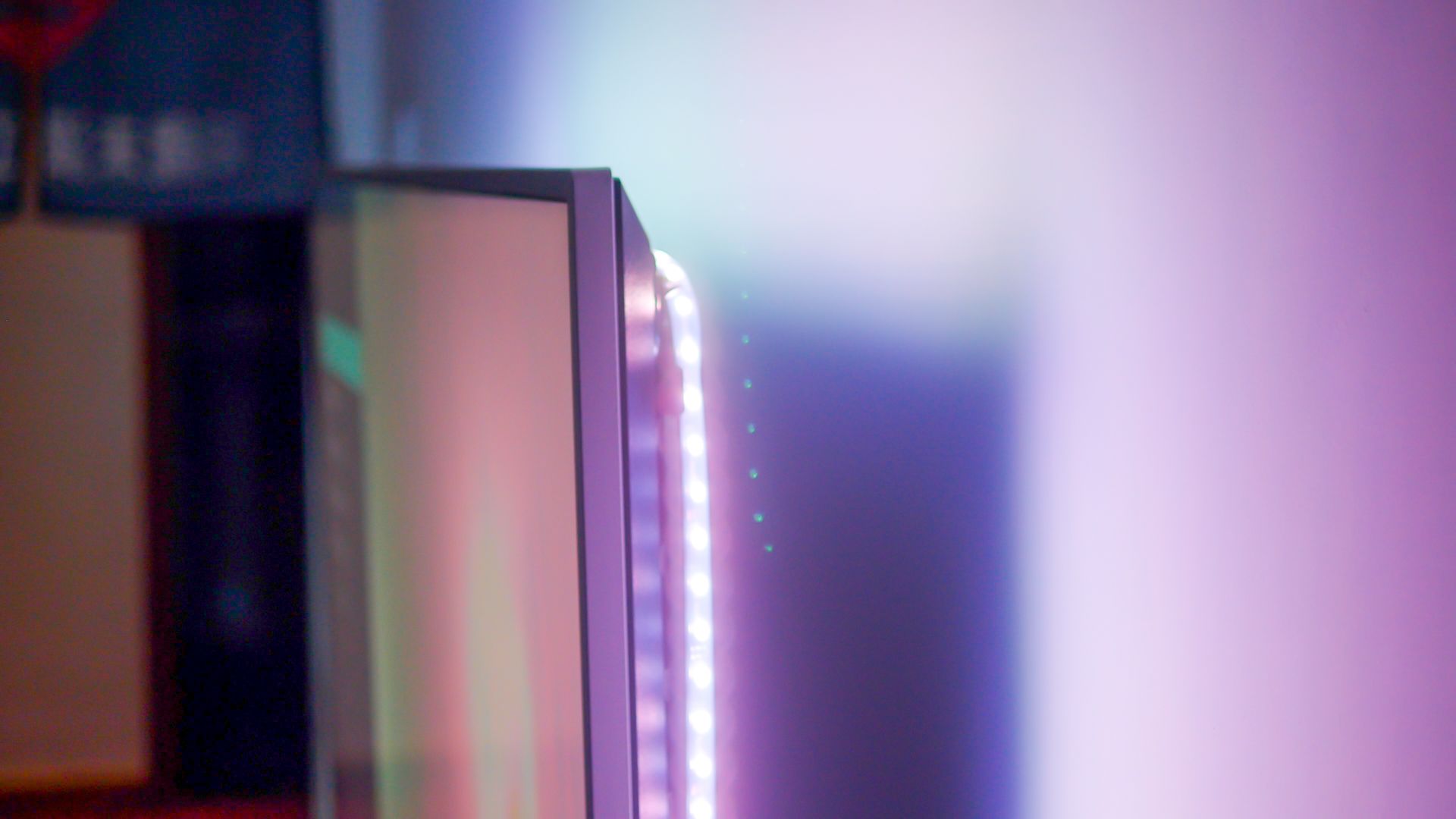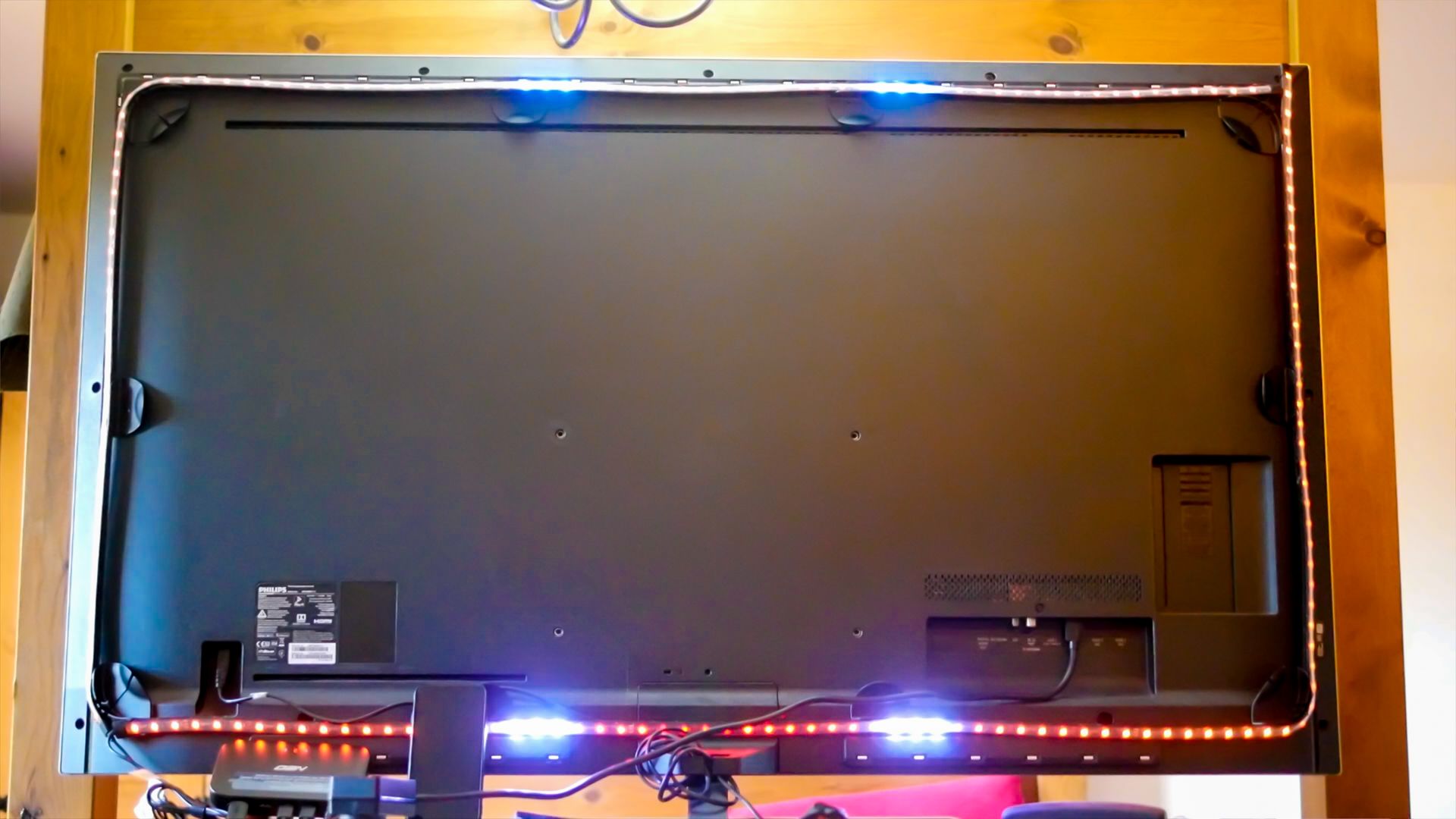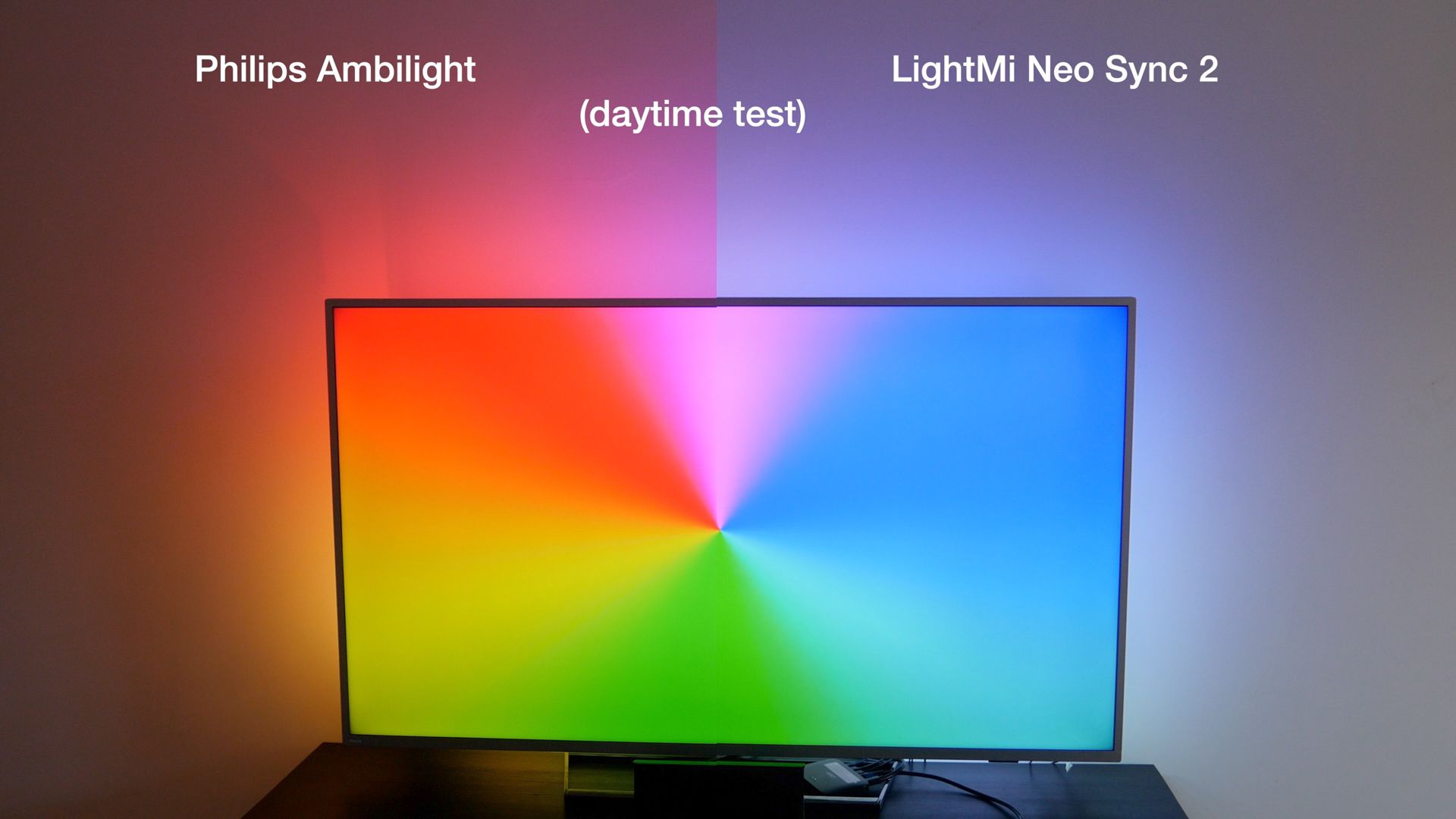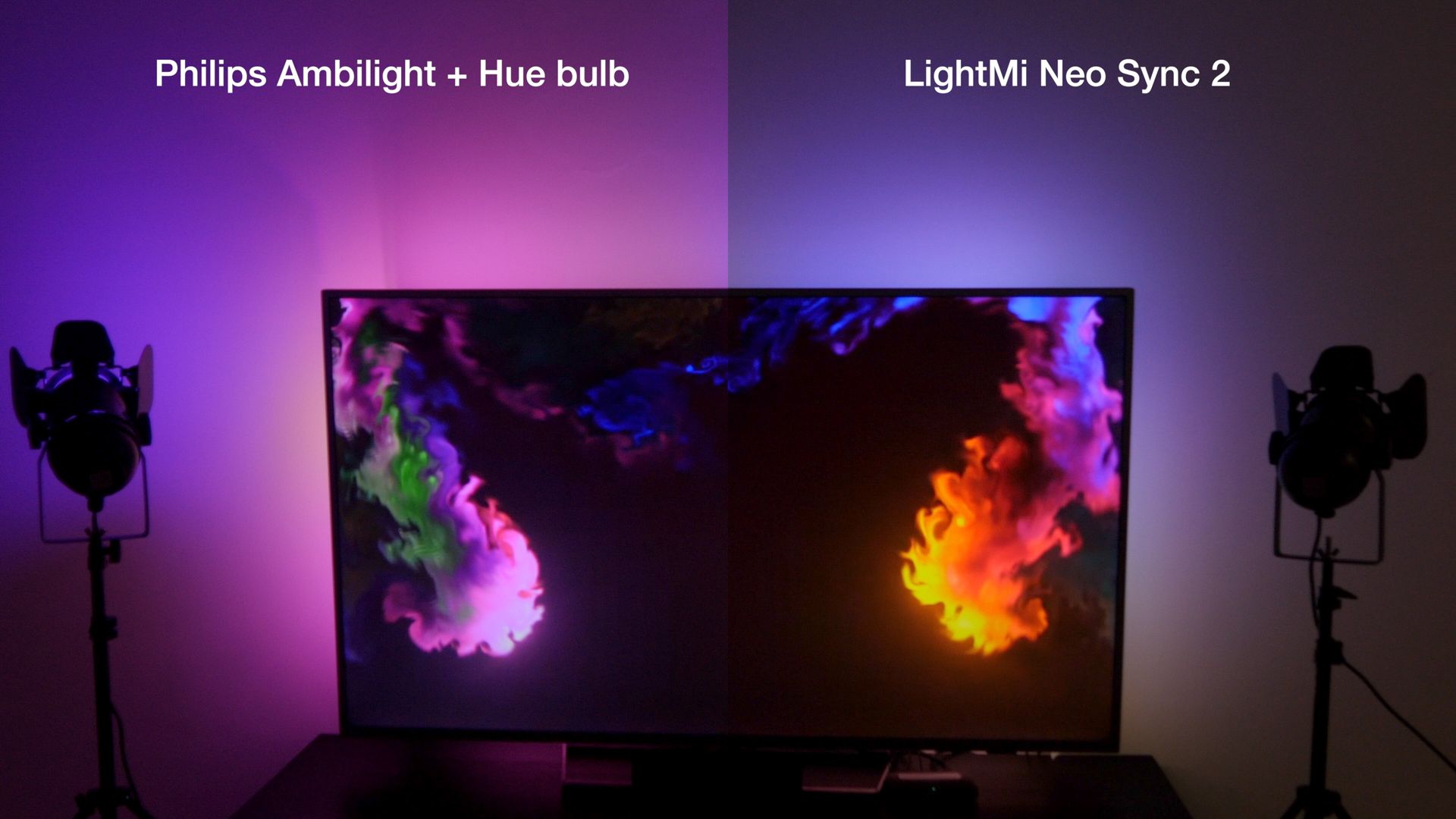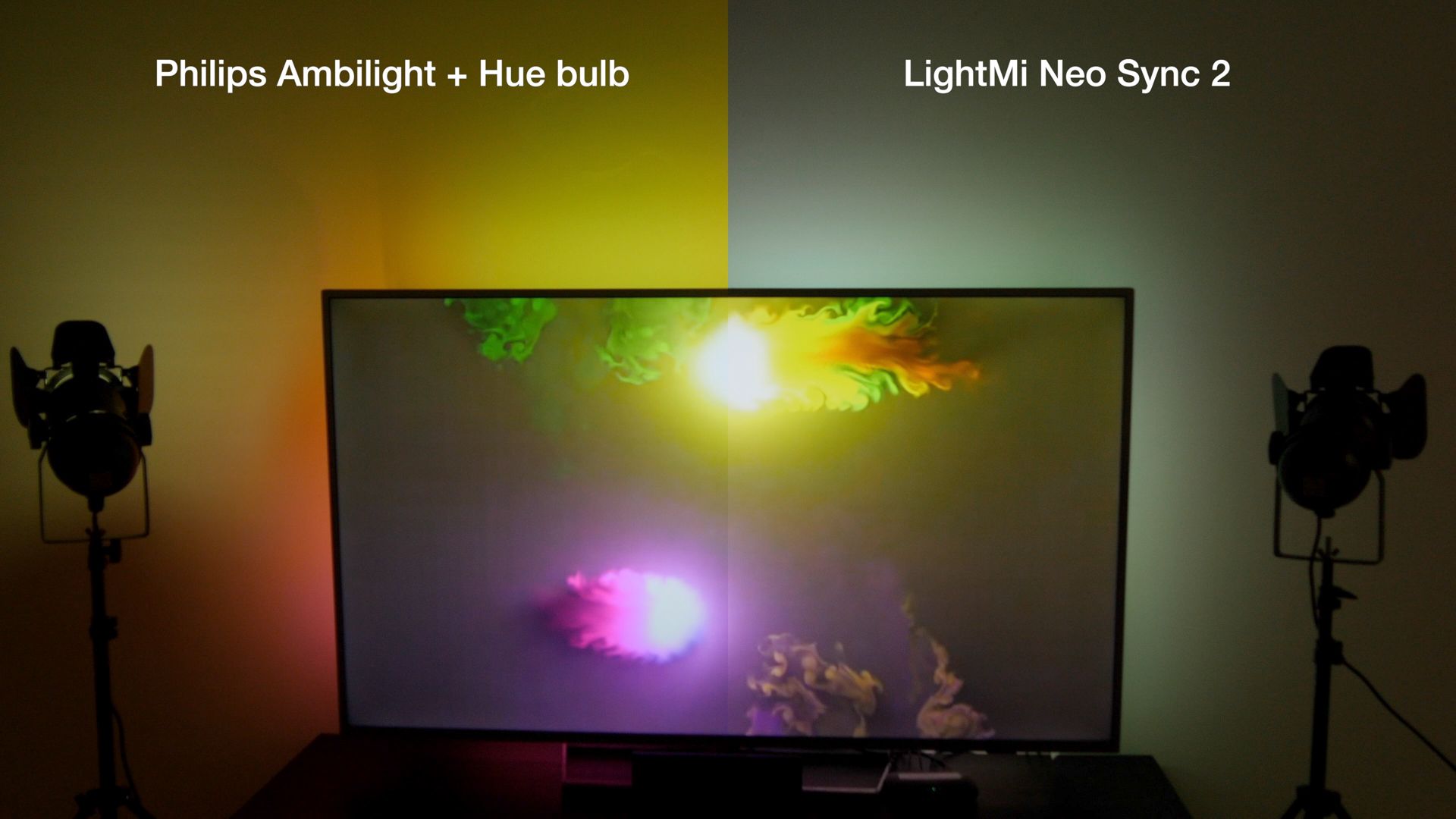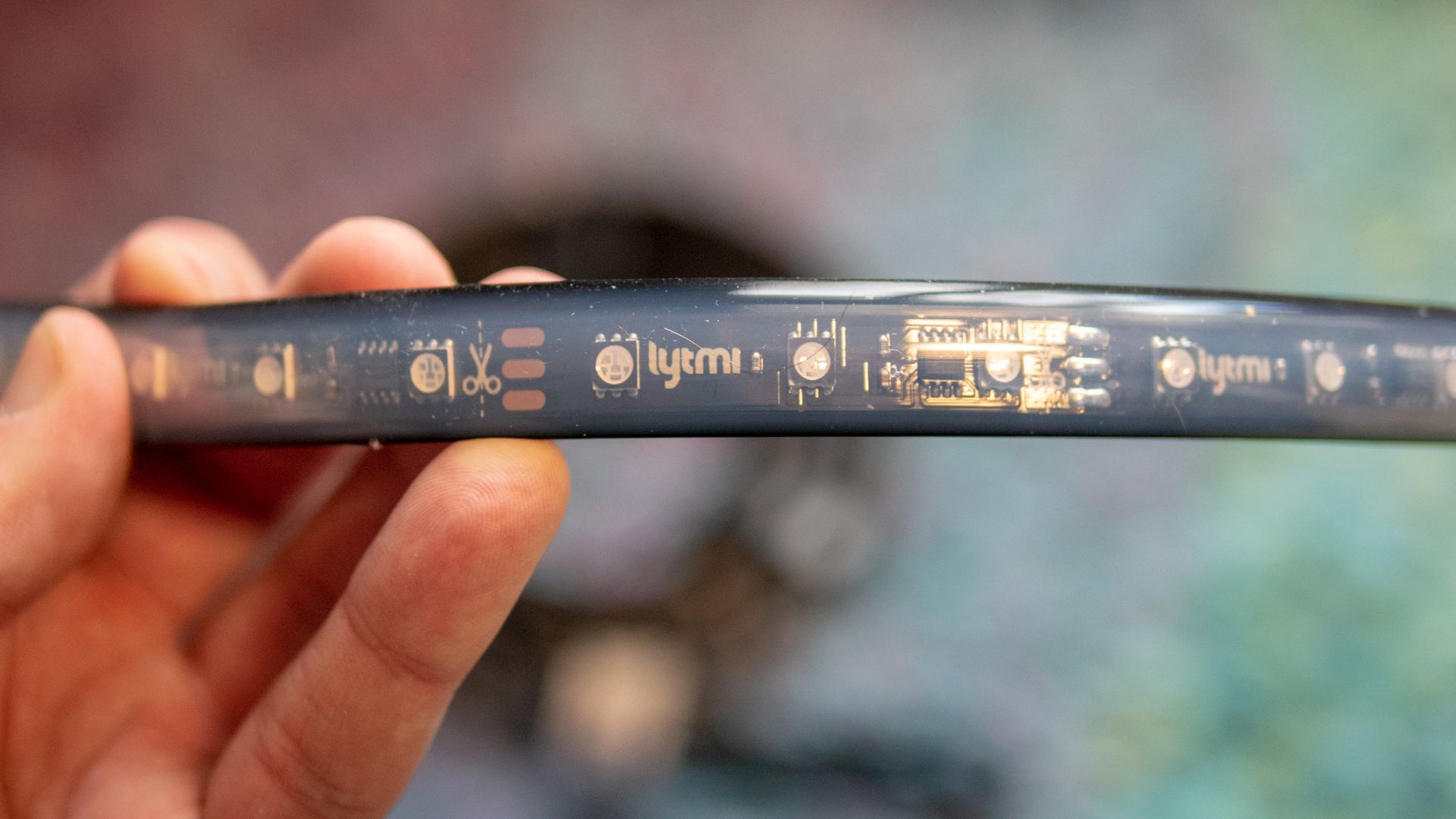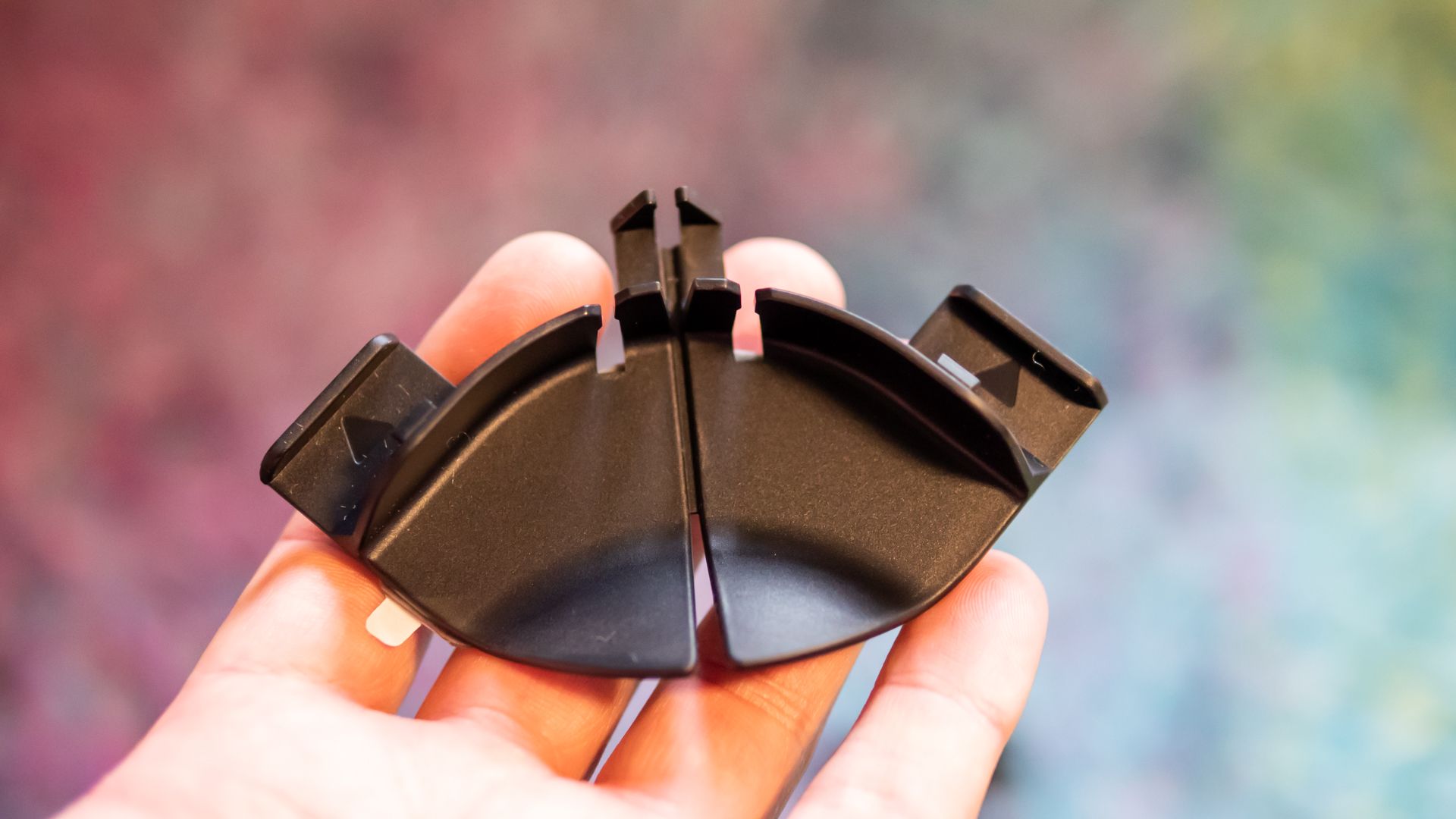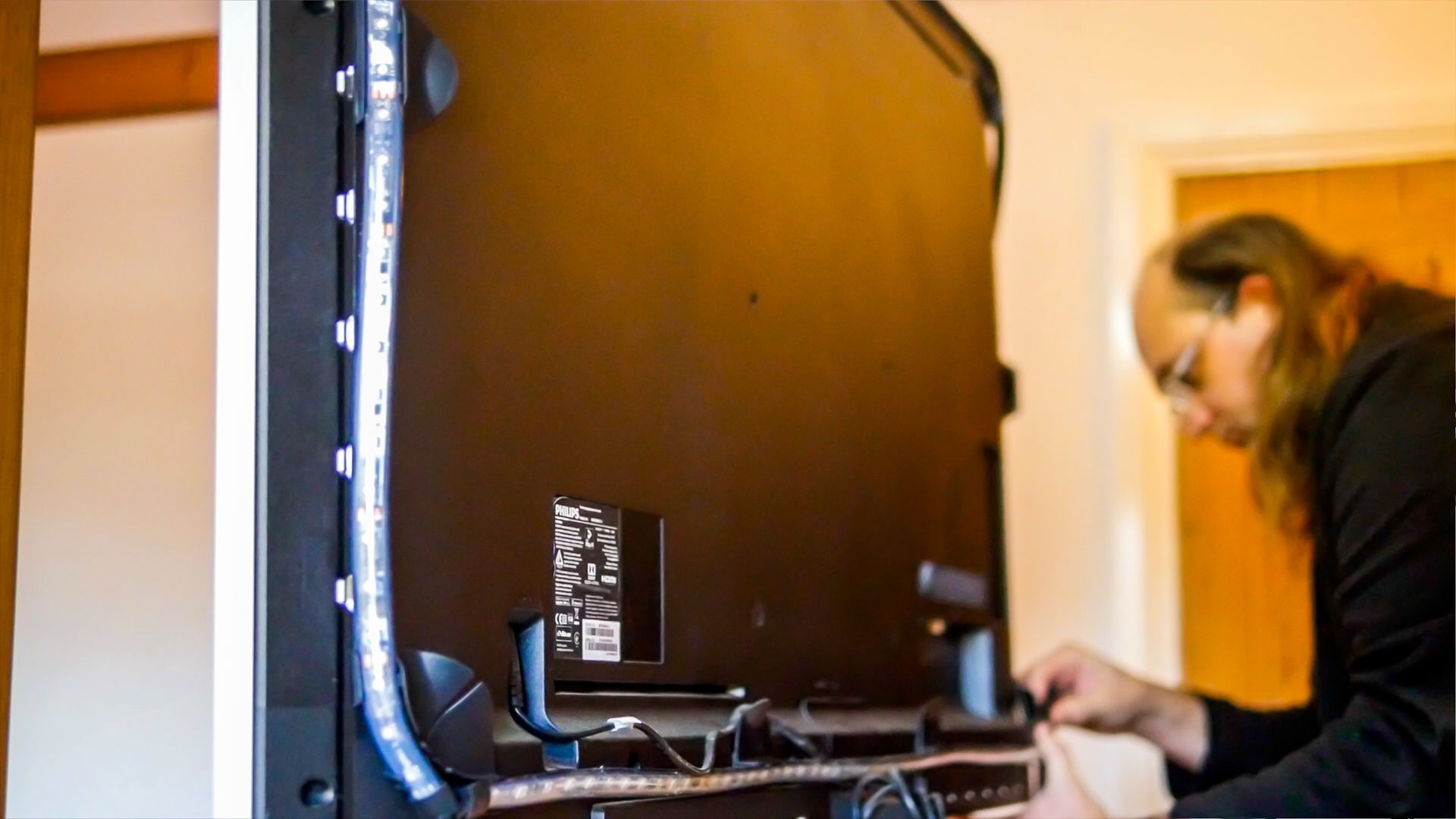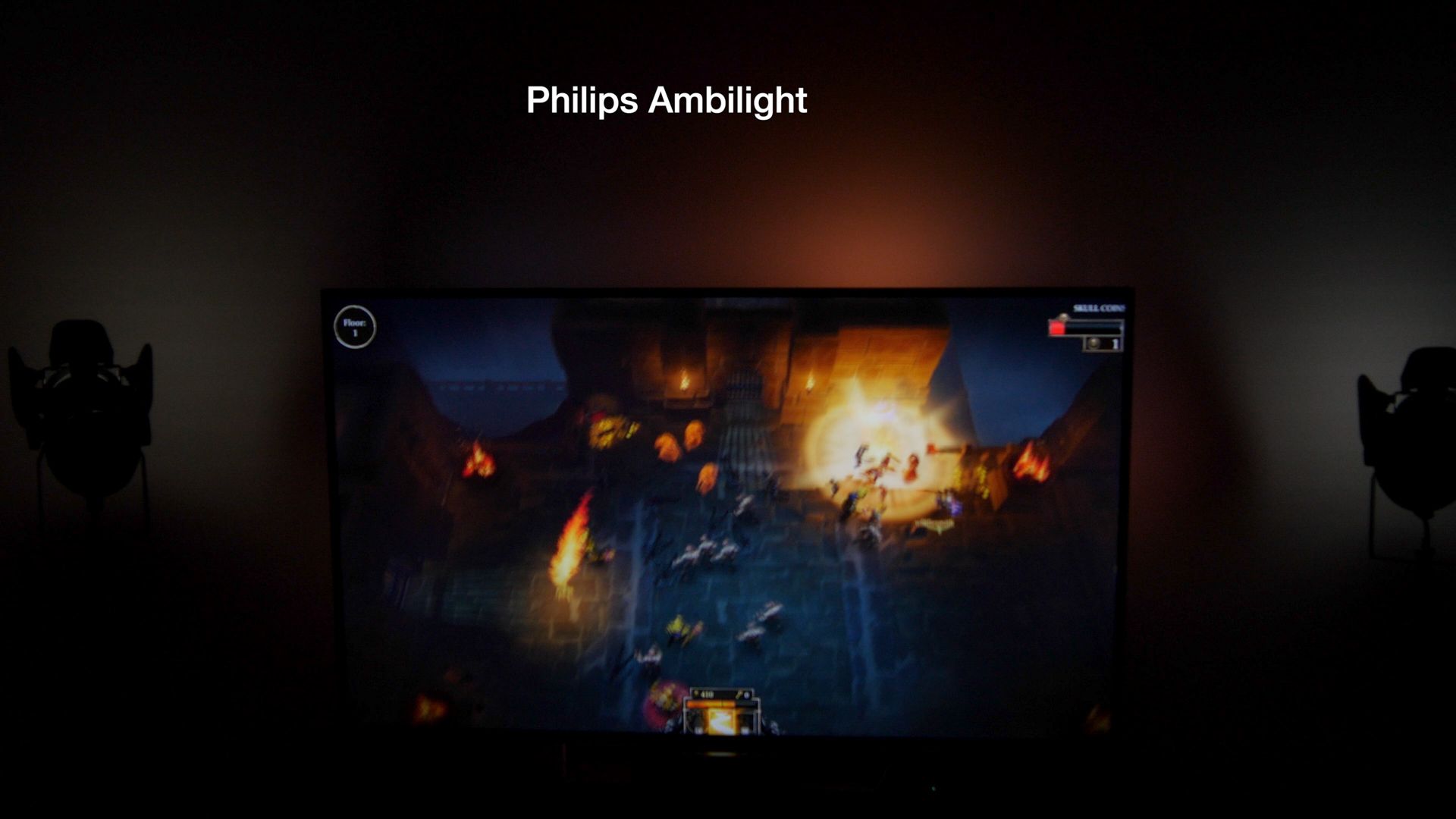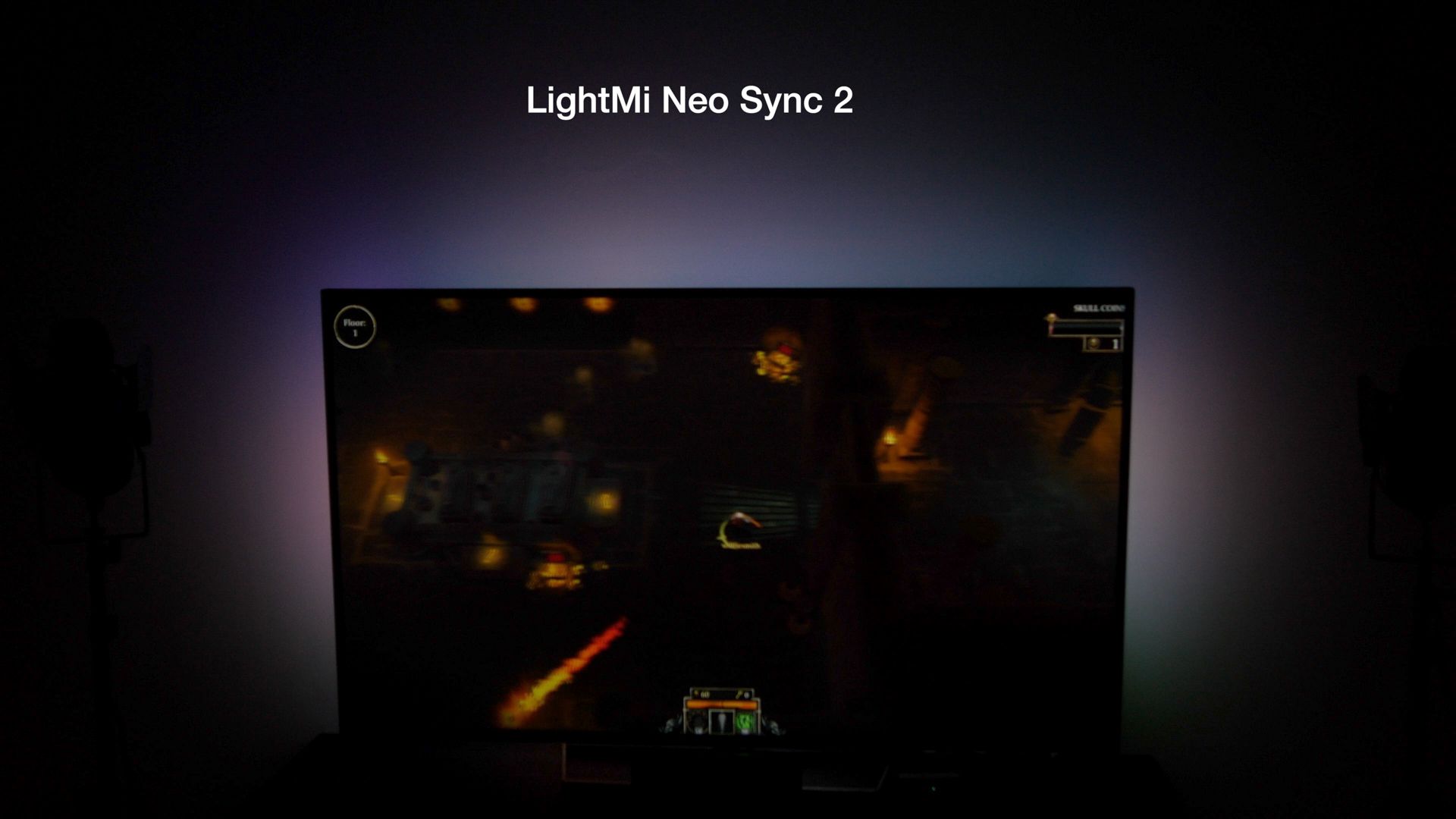Lytmi Neo Sync Box HDMI 2.0
If you want to add Ambilight-style capabilities to an existing TV, the Lytmi Neo 2 is the best solution yet that'll work with any HDMI sources. It's not quite as good as an actual Philips Ambilight TV, but it's as close as you'll get in a plug and plug system.
- Brand: Lytmi
- TV Size: Up to 120 inches (three model variations)
- Sides of Lighting: Four
- Connectivity: Wi-Fi (2.4Ghz only)
- Remote Control: App only (Lytmi or Tuya Smart)
- Music Reactive Mode: Yes
- Reactive displays for an immersive viewing experience
- Music and ambient lighting mode
- Works with any HDMI input up to 4k60 HDR (HDMI 2.0, not 2.1)
- Temperamental with dual-band Wi-Fi
- Colors are muted in TV sync mode (but may be fixed in firmware at a later date)
- Won't work with native TV content
- Currently no expansion capabilities (promised for later)
Philips Ambilight TVs offer a gorgeous and immersive synchronized backlighting system, but unless you're in the market for a new TV, you'll need some type of retrofit kit to add Ambilight features to your existing TV. For those keen on going the DIY route, Hyperion running on a Raspberry Pi gives good results, but on top of the Pi, you'll need a USB capture dongle, an HDMI splitter, your own LED strips, and some way of mounting them. It's not easy to configure, either. So is there an easier way? Thankfully, yes.
The Lytmi Neo Sync 2 is an all-in-one kit that takes the hard work out of retrofitting an Ambilight—and it works with a 4K HDR 60Hz signal just fine. In this review, we'll be putting it to the test—on the back of an actual Philips Ambilight TV—so you can see exactly how it compares.
What's In The Box?
I don't usually talk much about the contents of the box, but in this case it exceeded expectations. I assumed I would find some generic LED strips with a sticky back, much as you buy on AliExpress. What I found instead was two premium-feeling branded LED strips, encased within silicone at a 45-degree angle. This helps to get a wider spread of the lighting (in much the same way that an actual Ambilight is also mounted at an angle).
Also in the box is the magic but otherwise unexciting Neo sync box (HDMI in and out, and two USB ports to connect the light strips), plus a power supply and set of mounting brackets.
Note: the Lytmi Neo 2 can work with any size TV up to a massive 120-inches, but there are three different variations depending on your intended TV size. These vary in price from $169 for TVs of 60-inches and less, up to $199 for 120-inches. Make sure to buy the correct size, or you may not have enough LEDs. You can trim the strips down to size, but not the other way.
Installation
Two LED strips are supplied, which should go from the bottom corner of one side to the opposite corner of the other, one via the top and the other via the bottom. The strips themselves don't affix directly to your TV. Instead, you should clip them into the supplied mounting brackets, in all four corners, and evenly spread along the sides. These ensure you get a gentle curve in the corners so as not to stress the electrical connections, as well as keeping the correct angle for the LEDs to project outwards and at the wall. I found the installation to be far easier than I expected.
You may find you have excess LED strips when they meet at the top corner. Along the strips there are evenly placed points at which it can be cut with a sturdy pair of scissors; indicated by the scissor icon. You should also pull the endcaps off the unneeded pieces, and replace them.
Once everything is plugged in and powered on, you should launch the Lytmi app and add a new device. You'll then be walked through the process of matching the strips to the sides of your TV, but it's all really simple. Somehow, the box also precisely knows where you cut the strips and where the corners are. Like I said: magic.
One thing to be aware of is that like many IoT devices, the Neo Sync box may not play nicely with a dual-band network, in case you'll need to separate the 2.4Ghz and 5GHz networks. Ironically if your router is far enough away, you may not have a problem. I originally set the Neo box up in the bedroom, where the TV usually lives. Even though I have a single dual-band network, it's far enough away from the access point that only the 2.4Ghz signal gets through. I then moved the TV to the living room, right next to another access point, and it all seemed to work fine.
You Need an HDMI Signal
The Lytmi Neo Sync box needs to sit between your input source and your TV to extract color and motion from the signal accurately. It works fine with up to a 4K60 HDR signal (HDMI 2.0, not 2.1), but this does mean it won't work with your native TV operating system or terrestrial/Freeview channels. If you have an AV receiver, or use a streaming dongle of some sort, that'll work fine—just plug that into the Lytmi Neo instead, then the HDMI output from the box to the TV. But just know that if you mostly use Smart TV features, this solution won't work for you.
It's also worth bearing in mind that the lights will automatically activate when an HDMI signal is detected. This means that for most people you may never need to open the Lytmi app at all outside of initial setup. But if you tend to leave your PC on, for instance, and just turn off the TV screen, the lights would stay on. You'd need to go into the app to turn them off.
Using the Lytmi Neo Sync 2
The Lytmi app offers a selection of music reactive and ambient lighting scenes, which you can either enable while you're watching TV (such as to accompany a music video or kaaraoke night), or just turn on like any other smart light.
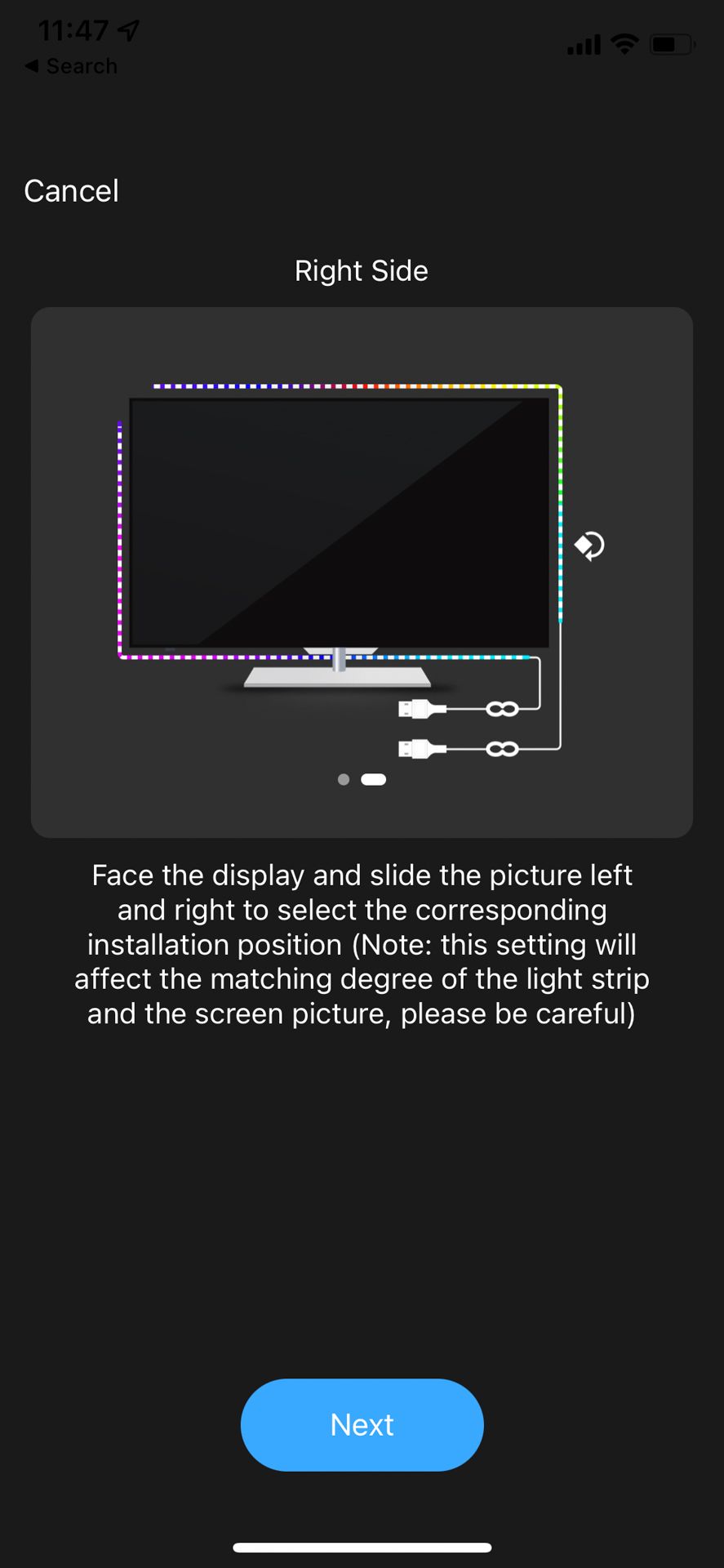
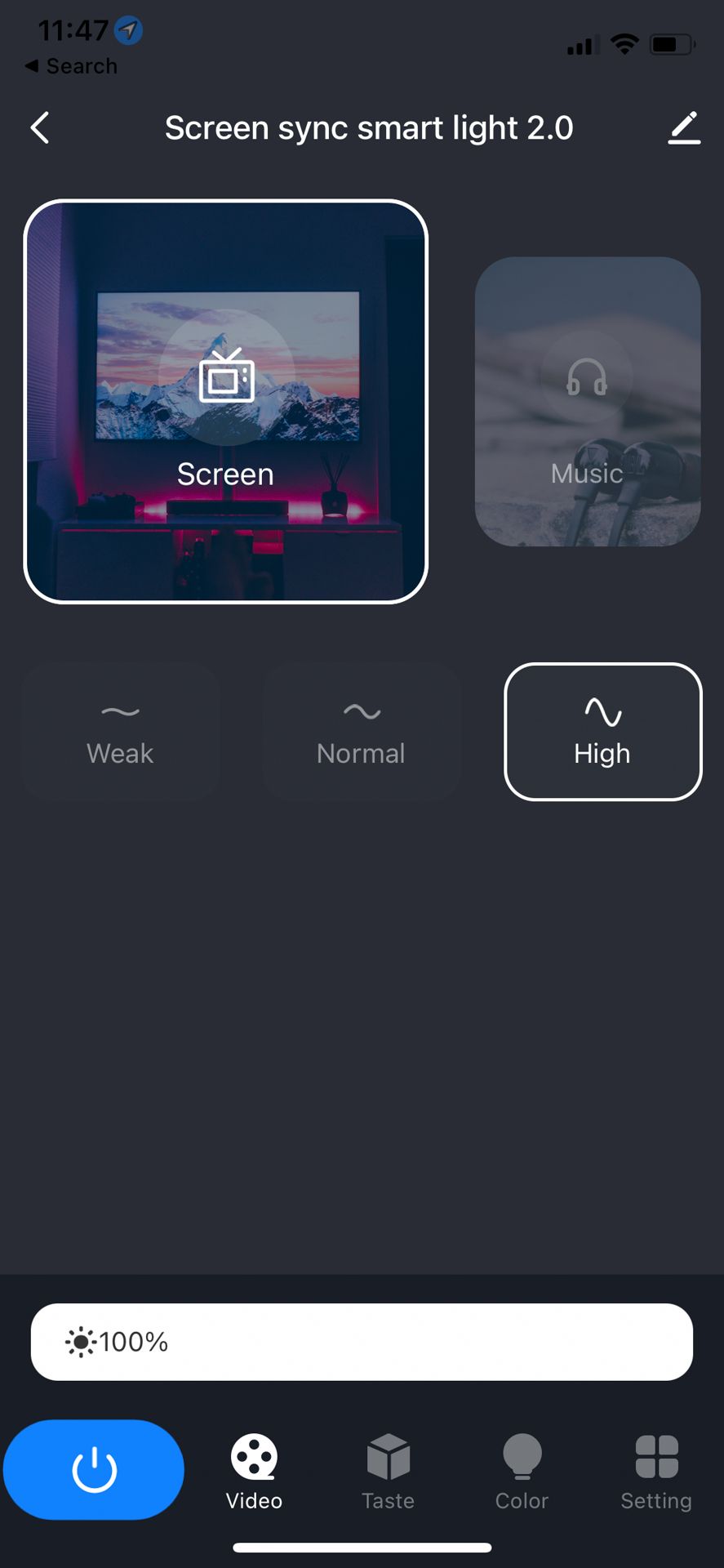
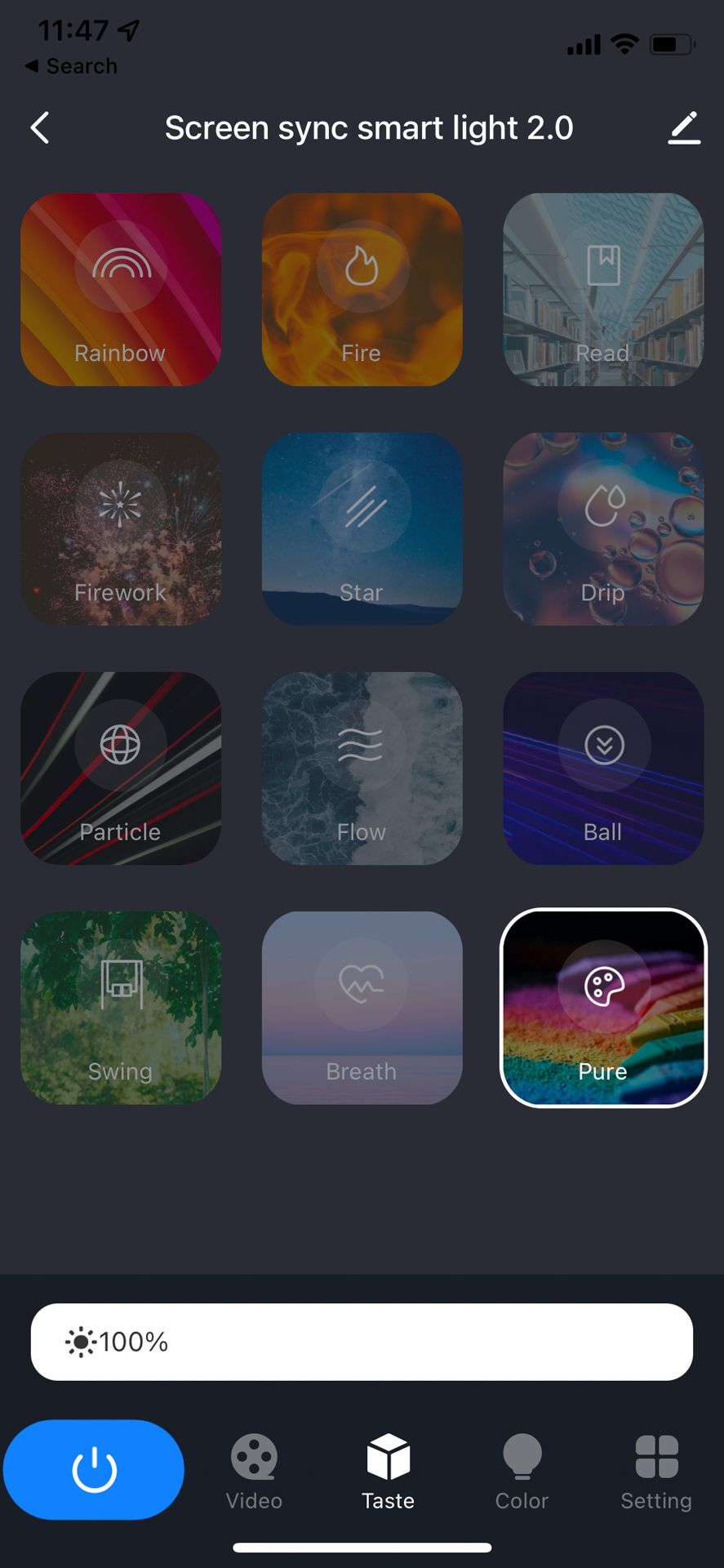
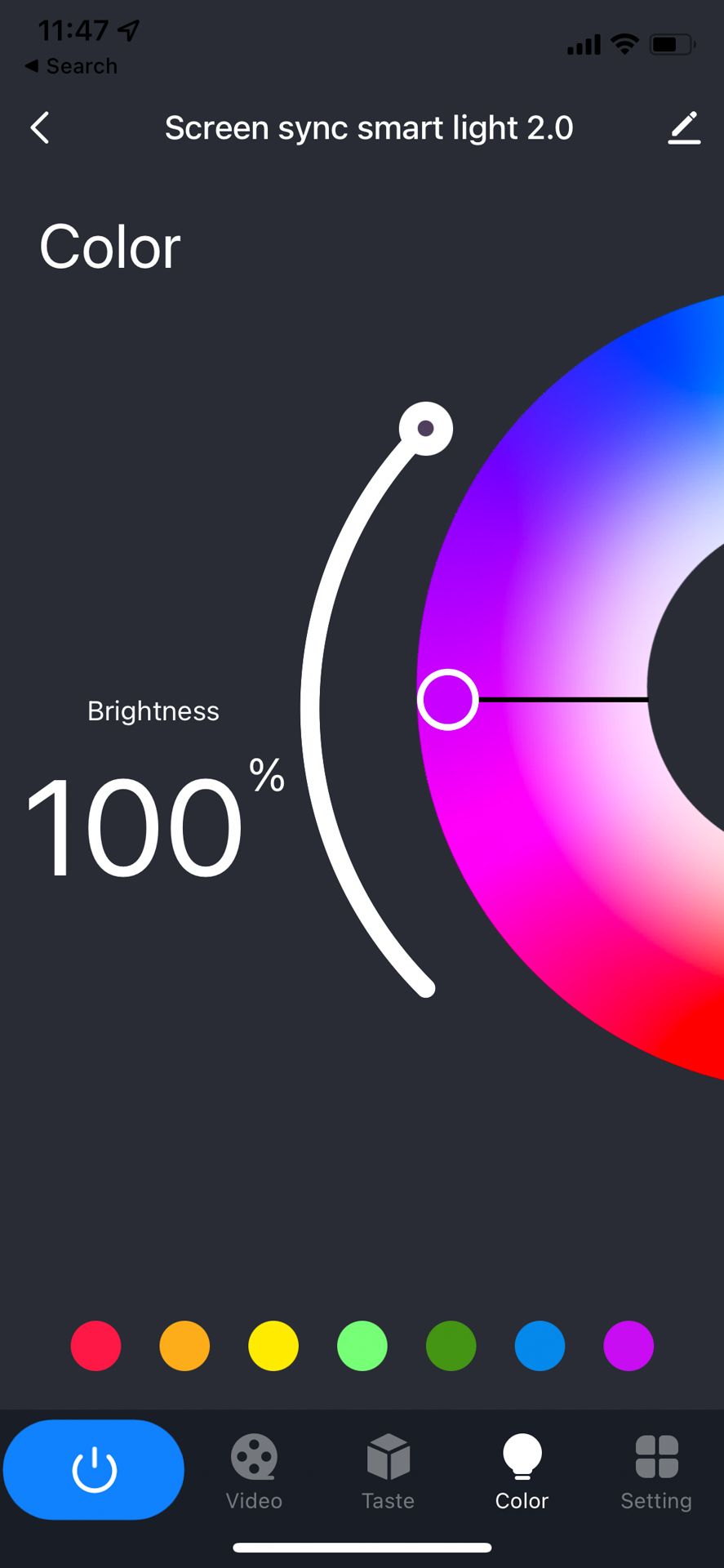
One slightly confusing aspect here is that the Lytmi app allows remote control, but doesn't integrate with the big three voice assistants. For that, you'll need to pair the Lytmi Neo with an entirely different app, called Tuya Smart.
Comparisons to Philips Ambilight
You'll find the best comparison by watching the review video embedded at the start, but I've add some screengrabs below.
In terms of reaction speed, even in "fast" mode, the Lytmi strips can lag a little behind the Philips—but only in the scale of milliseconds. This is only noticeable during a contrived flashing test of colors; for actual content it doesn't make a difference. Brightness is certainly on par with Philips, with the angled strips ensuring good projection on to the wall.
However, one area that felt disappointing when directly comparing the two is color saturation. The Lytmi strips are certainly capable of bright and vivid colors, as you can see while they operate in music reactive or ambient modes, but the screen analysis algorithm adds a little too much white in for my taste; perhaps it's analysing over a wider area, averaging more colors than Philips does. They certainly feel more muted. I asked Lytmi if this could be adjusted, and was told it's not the first time they've heard this. request, and the feature is planned for a firmware update. However, the update likely won't arrive until the latter half of 2022.
Again, for most TV or movie content I didn't really notice the difference—it was only when switching back and forth that it stood out to me.
One area where the lack of saturation was noticeable was while gaming. Playing Gauntlet, spell effects such as a fireball heading off-screen screen, or torches, would cast a pleasingly reactive visceral orange glow on the Ambilight, which was otherwise as dim as the gloomy dungeon I was in.
Unfortunately, when played through the Lytmi, it all just got smushed into shades of white:
Still, I'm confident this can be fixed in firmware—the LEDs are clearly capable of more vibrant displays.
Future Expansion
One thing that stands out in favor of Philips Ambilight at the moment is the broader Hue ecosystem. If you have some additional Hue light strips or color bulbs in the same room as your TV, these too can be integrated to sync up with TV content. The effect isn't nearly as dynamic as the TV due to network latency, but definitely adds to the experience and immersion.
At the moment, there is no wider ecosystem for Lytmi, so what you see is what you get. However, when I asked our contact about this, they mentioned that more products are coming that will be compatible, and that may even include some sort of IFTTT functionality. In theory, you'd even be to make your Hue bulbs work with this, but the latency for color changes to be reported to a web service (and back again to your house) would be annoying for fast-paced content. It's good to know there'll potentially be more Lytmi devices to expand the system in future, but for now if you're after a veritable living room light show from every corner, you'd be better off investing in an actual Philips Ambilight TV.
Time to Upgrade Your TV Experience?
If you're in the market for a new TV anyway, and you want Ambilight features, I can highly recommend an original Philips Ambilight TV. It doesn't add a huge cost, and many models include Android TV which you may find is more than sufficient for your media needs. Grab a few floor lamps and a Hue color starter kit while you're at it for the ultimate in immersive viewing.
But, if you want an easy-to-configure aftermarket Ambilight, the Lytmi Neo Sync 2 does a fantastic job, and can be retrofitted to any TV. You'll need to ensure you only use external HDMI devices, as it won't work with your native TV smart features or terrestrial broadcasts, but it's easy to work around that. Additional smart feature like music reactive modes are nice, but secondary to the main purpose.
While results from the Lytmi Neo Sync 2.0 weren't quite as impressive as my original Ambilight TV, it's still the best I've seen from an aftermarket kit yet, and promises to improve in time.

